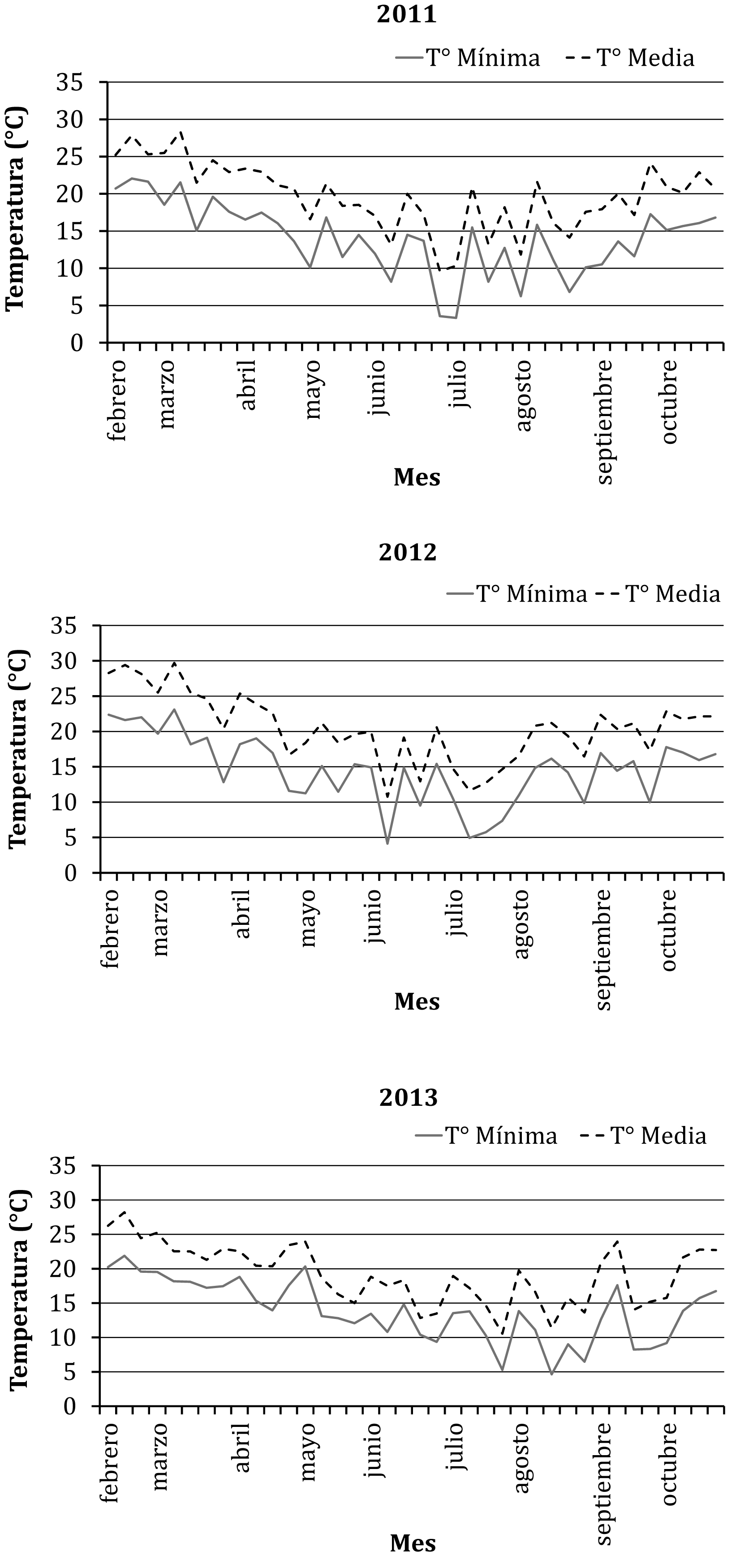Effect of flower thinning and stage of maturity on yield and fruit quality of pepper
Keywords:
Capsicum annuum L., mature green fruit, red ripening fruit, fruit of the first branchAbstract
Pepper crop in the province of Corrientes covers about 590 ha under greenhouse. The decision of harvest in a different state of maturity by the producers will depend on the conditions that are presented at the time of commercialization. This study was made to determine first branch flower thinning and stage of maturity effect on yield and quality of pepper for fresh consumption. The experiment was performed in the EEA INTA Bella Vista, Corrientes. Margarita hybrid was studied and four treatments were used: green mature fruit without thinning (VT1); green mature fruit with thinning (VT2); red fruit without thinning (RT1); red fruit with thinning (RT2). A randomized block design with four replicates was performed. Three experiments were carried out in three consecutive years: 2011-2012-2013. The fruits were separated in small, medium, large and extralarge ones and then grouped together to get the total yield and average fruit weight. Analysis of variance was performed and means were separated with Duncan's test. Yields per hectare (tn.ha-1) for the three experiments were: 2011 (VT1) 82.8 and (VT2) 78.0; 2012 (VT1) 126.0 and (VT2) 119.9; 2013 (VT1) 89.0 and (VT2) 85.3. Mature green fruit harvesting gave higher yields. Red ripening fruits harvesting increased fruit weight and quality.

Published
Issue
Section
License
Aquellos autores/as que tengan publicaciones con esta revista, aceptan las Políticas Editoriales.


